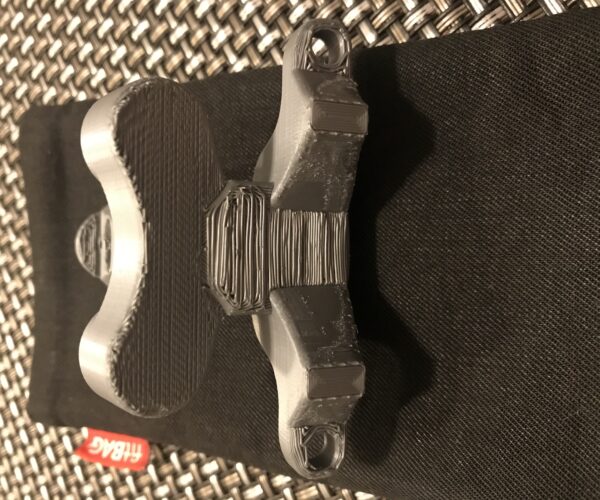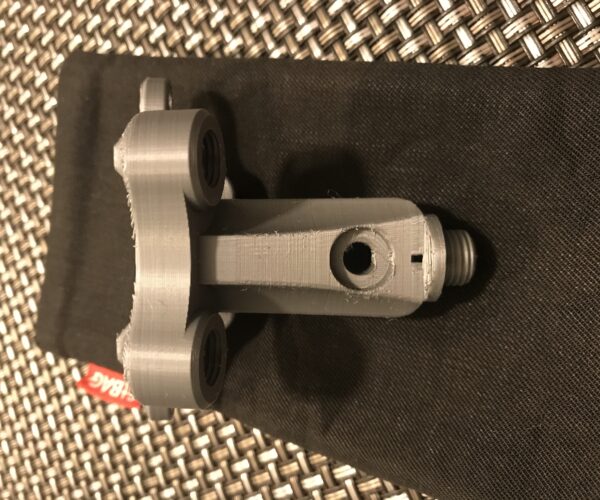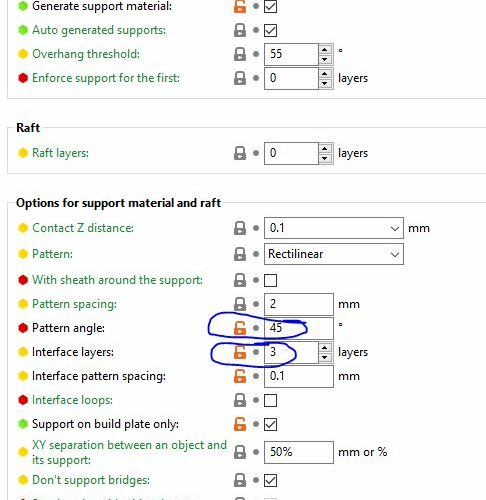PLA support surface quality issue
Hi All,
I am new into 3D printing and are very happy with the Prusa MK3s but unfortunatelly I start to experience some issues with my PLA prints (from Prusament). I hope someone can give me some advice.
The issue is the very poor surface quality on top of the supports:
I tried to change the pattern layers and the amount of interface layers (found on this forum):
If you look at the other side of the print, the quality is very nice and smooth:
Additionally on the other side I see some 'lines' and uneven spots:
I think this are two different issues, but just want to be 100% sure.
It would be nice to get some feedback from you.
Thanks a lot!
RE: PLA support surface quality issue
Supported surfaces are always going to be ugly when using removable supports. You can improve results slightly, but the very nature of removable supports requires compromises. For the supports to be removable, there has to be a small gap between the supports and supported surfaces. This means that the layers printed immediately above supports are literally printed on air. Extrusions will be rounded due to lack of underlying layer squish, and may sag a bit.
You can improve appearance somewhat with settings, but don't expect miracles. Other slicers handle supports differently and perhaps better for your needs. Your best options are:
- Orient the part to minimize the requirement for supports.
- If designing the part yourself, consider support limitations and minimize the need for, or include supports.
- Break the part into multiple parts that can be printed without supports and assembled after printing.
Maker's Muse has a very good YouTube tutorial on this topic.
and miscellaneous other tech projects
He is intelligent, but not experienced. His pattern indicates two dimensional thinking. -- Spock in Star Trek: The Wrath of Khan
RE: PLA support surface quality issue
Here's an example of the same part printed using different slicers to support the big square surface. Results are left-to-right, top-to-bottom: ideaMaker, Simplify 3D, PrusaSlicer, Cura.
and miscellaneous other tech projects
He is intelligent, but not experienced. His pattern indicates two dimensional thinking. -- Spock in Star Trek: The Wrath of Khan
RE: PLA support surface quality issue
Hi Bobstro,
Many thanks for your quick response. I will try to optimise the design and also will try a different slicer.
Cheers,
Marc
RE: PLA support surface quality issue
@bobstro
Prusaslicer comes out a distant last. Does anyone know why?
i3 Mk3 [aug 2018] upgrade>>> i3MK3/S+[Dec 2023]
RE: PLA support surface quality issue
[...] Prusaslicer comes out a distant last. Does anyone know why?
Best I could understand from the GitHub threads is that it's legacy approach from Slic3r roots. It had some benefits, but other slicers have moved past it apparently.
PrusaSlicer puts a layer of bridge down under the supported surface, and it can't easily be removed. You get that ugly stringy surface and it's thicker than designed. I think the devs are aware of it, but it hasn't bubbled up as a priority yet.
IdeaMaker is an interesting alternative. I prefer PrusaSlicer, but will use what works. If I can't avoid big supports, try the others. None are exactly pretty.
and miscellaneous other tech projects
He is intelligent, but not experienced. His pattern indicates two dimensional thinking. -- Spock in Star Trek: The Wrath of Khan
RE: PLA support surface quality issue
If you take a look at the Cura documentation, the options for supports are literally overwhelming!
I've only scratched the surface, either with Cura or Prusaslicer.
One of the best things, however, in learning how to do supports that work acceptably and come off reasonably well is the set of parameters that's floating around here on the forum.
RE: PLA support surface quality issue
I'm getting good results using PrusaSlicer for things like miniatures. Large flat surfaces are a problem, and it seems to be that bridging layer.
and miscellaneous other tech projects
He is intelligent, but not experienced. His pattern indicates two dimensional thinking. -- Spock in Star Trek: The Wrath of Khan

